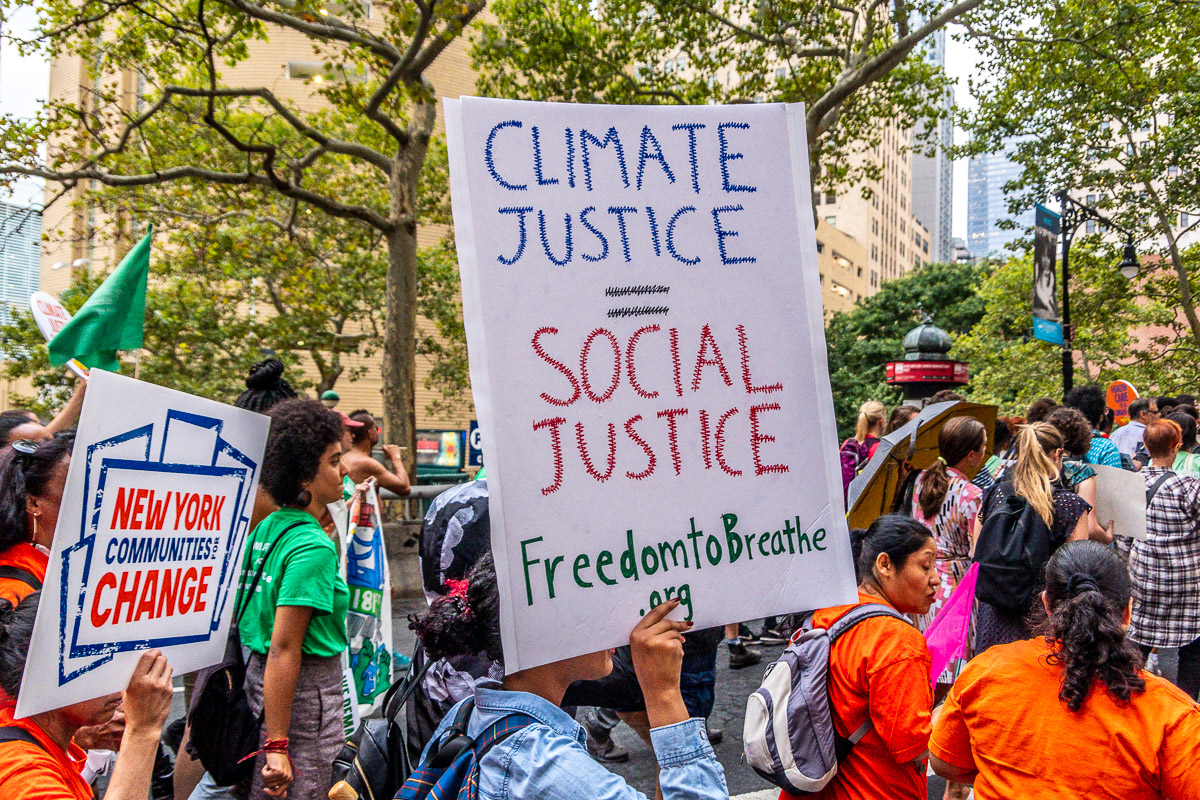The Midterms in the United States in 2022 have not been the primary focus of people as of late, as the war in Ukraine, rising fuel costs and inflation has captivated the media and public attention — but at what cost? What is happening with state politics while our news cycle is so distracted? How is the political landscape changing now, and how are individual candidates being impacted? All of these questions are going to be examined in part two of this series on the upcoming Midterm Elections in the United States.
Beyond the war in Ukraine, the U.S. is in a position of deep political divides on issues such as the economy, the climate crisis and a host of other issues, which has hyperpolarized every single issue. Also, we will look at what the recent midterm primaries in Texas can tell the U.S. about upcoming primary elections that are happening within the next few months, and how that might affect the general elections in November 2022.
How will the Current Economic Situation Impact the Midterms?
While the economy has grown under President Joe Biden and some of his administration’s new policies, there has also been a sharp rise in inflation. Inflation something that is common following economic resurgence, which can be controlled by enacting strong fiscal policies. Not acknowledging inflation could be damaging to Democrats in the upcoming midterms, as many voters consider inflation as one of the major topics of concern as to how they will cast their ballots in the primaries and in November. Along with rising fuel prices (some of which were temporarily fixed, as Biden released some of the oil reserves in the U.S. and other nations did the same), the Democrats have blamed rising gas prices on Putin and the oil companies not their own domestic policies, which Republicans have actively exploited for their own benefit to gain some political ground. This is especially true in the Midwest, where a vast contingent of the Republican’s supporters reside, and whose population already deals with higher than average fuel prices, because of their distance from ports and oil refineries. Republicans have focused on many Democratic states and their rising gas taxes and renewed environmental policies, which were abandoned under Trump, in order to try and shift the minds of some moderates to vote for the Republican party.
There is no clear answer to who will face the brunt of the blame until the Midterms actually happen, as many Americans do not carry foreign policy issues to the ballot box until it hits them in the wallet or in other ways.
Some are saying that corporations are using the supply chain crunches, the COVID-19 crisis and rising fuel costs to overinflated prices, which have gone largely unregulated by Democrats and Biden. Without meaningful action to address the issue of inflation, Democrats may lose more voters to Republicans in this upcoming election.

How Does the War in Ukraine Change the Political Climate in the U.S.?
After facing blowback from the withdrawal from Afghanistan, if Biden continues his strongman stance, creating a sense of unity among allies in Europe could possibly give both Biden and Democratic candidates a very small boost at the polls. His approach to Eastern Europe and his resistance to tyrants like Putin has been positively received. This positivity has been boosted by the fact that the situation in Ukraine has a 24-hour news cycle (as it should), and the perception that it is happening right on NATO’s doorstep. People are concerned by the threat the invasion poses to Democracy. What many voters are seeing is now going to cause the issue to be directly followed by the candidates they vote for in the upcoming midterms, which is something that has not occurred since the 2002 midterms following the cataclysmic effects of 9/11. War, or any foreign policy success, has always given the sitting president an improvement in polling and improved chances in both midterms and general elections. If Biden continues his strongman stance, creating a sense of unity among allies in Europe should continue to give him enhanced polling numbers and give Democratic candidates a boost at the polls.
We do not need to raise the defense budget by another $31 billion.
It's time to make investments into our communities — not into a defense budget that is already larger than the next 11 countries combined. pic.twitter.com/2nUpMpNt6E
— Rep. Pramila Jayapal (@RepJayapal) March 28, 2022
A promised cut to Pentagon spending did not happen, as is commonly the case with foreign policy in the U.S. Keeping the Pentagon budget high is often a unifying issue among politicians in Congress, as most, not including Progressives, are hawkish towards new perceived threats from both China and Russia. This increased spending being proposed to Congress is guaranteed to change how Democrats are viewed at the polls, especially when some are vehemently against increasing the military budget, including Bernie Sanders (D-VT) and Pramila Jayapal (D-WA).
The outrageous spending is something that many people who are far-left on the political spectrum do not support, as they believe this money is better allocated towards social services, humanitarian aid and economic relief to offset some of the effects of inflation. So little of the Democratic Party is run by Progressives their policies, so are not dictating the Party’s decisions when it comes to any future fiscal policy.
In a complete political 180 from the condemnation of the war in Ukraine by the political left and center, Trump and the Far-Right have expressed their support for the Russian dictator, Vladimir V. Putin, and criticism of NATO, despite outcry from inside their own party and from Democrats. The impact of this defection from the mainstream consensus among U.S. politicians and voters seems minimal at best, as most voters overwhelmingly support Ukraine and are opposed to the Russian Invasion. Most of the Far-Right politicians who have sided with Putin have seen their popularity rise on Russian State TV, but in the U.S. they have lost the backing of much of their party, which could be the beginning of the end for the Far-Right within the GOP — a welcome shift for many Republicans who have been trying to stabilize the identity of the party going forward.

Is Climate Change Playing a Role in Who Gets Voted in?
Though the climate crisis continues to get worse, politicians and voters have pushed it to the back of their agendas, including how some may cast their ballots. A reason for this major shift in thinking by both voters and politicians is the continued rise of gas prices and the job losses that will potentially come with the closure of the coal and gas industry. This rhetoric has hit particularly hard in states that have the largest number of voters who work in the energy sector and companies that continue to operate pipelines and oil wells. The Republicans have also framed the Democratic view on climate in a negative light, attacking gas tax legislation, environmental protection laws and the Build Back Better plan set forth by Biden. They have framed it as some drastic plan that will alter the future, in a way that the Republicans say will create an economic crisis for their voter base.
The high gas prices, which are partly influenced by past environmental policies and rising gas taxes, are also a target for Republicans, which has led to some states repealing laws that added gas taxes to make gas a less cost-effective option than an electric vehicle.
On the other hand, Democrats believe they can offset some of the blows this November by passing big packages on climate, beyond the stymied Infrastructure deal, which was passed without any major climate legislation, as it was blocked by two moderate democrats, Joe Manchin and Kyrsten Sinema.
If the Democrats cannot meet the promises they made on enacting legislation to combat the climate crisis to win the 2020 general elections, the motivations for their voters will not be as high or have close to the same vigor. There is also some consensus throughout polling data, done by left-leaning think tanks and groups, that both Democrats and Independents are unified on climate being a major factor in who they vote for bringing some hope that this sense of unity will carry over to the ballot box for Democratic candidates.

What Does the Texas Primary Say About The Democrats’ Chances in 2022?
The Texas primary for this year’s midterms saw a typical Texas election, full of Republicans and continued challenges for Democrats, who had hoped that Texas would be more competitive, especially due to the growing population centers of Democratic voters who have come from other states. Instead, voters have become growing adversaries of Biden. His immigration policies changed the tide back to the right. There was also a shift when it came to the effects of the new voter restriction laws, which saw voters who voted for Democrats rejected at a significantly higher rate, due to the fact that they have embraced voting by mail, in a more significant way than Republicans. This will be a challenge for Democrats across all of the states that have implemented new and more restrictive voter laws.
The Texas primary shouldn’t be the biggest barometer of Democratic success, because it has rarely been a blue state, but watching a state like Georgia that’s more politically competitive will give us a better sense of how Democrats will perform in states that will be instrumental in their keeping control of the House and Senate.
What are the Green Party and Independent Parties Doing in 2022?
In the United States, a third party has never been successful at securing the presidency. The political sphere has always been strangled by the two-party system, so the chances for Independent or Green Party candidates, like any other election, is minimal. The internal fracturing within both the Democratic and Republican parties will likely lead to further dissatisfaction with the two-party system as a whole. Voting for third-party candidates will continue to be less likely because of the fear that “your vote won’t make a difference,” If voting for a candidate that is not established and has a near-zero chance to win a seat.

How will the Supreme Court Nominee Affect the Outcome of the Midterms?
A retirement decision by Stephen Breyer, a liberal justice from the Supreme Court was made earlier in 2022, came just in time to ensure a liberal justice could be seated on the court. This could be the last time for at least two years that Democrats have a narrow control over the House, as well as just enough of a majority in the perfectly split Senate. However, three Republican Senators voted to confirm Biden’s nominee, Judge Ketanji Brown Jackson.
The bipartisanship of Biden, and his ability to get someone nominated without too many political hiccups through a previously stagnated Congress, has to make a good impression on voters and potentially lessen the blow of low polling numbers and overall unpopular inefficiency in the legislative business of Congress. The successful nomination could widen the Democrat’s base among Black voters, a demographic Biden has been gradually losing in the last year, after failing to take meaningful action for voting rights protections and other legislation to Initiate real and visible actions that concern African Americans in the U.S.
Another challenge the Democrats face, even though Biden’s nominee passed through congress with surprisingly few political roadblocks, is the fact that there is still a Conservative majority. This majority in the Senate will likely continue until Democrats pack the court, or impeach Clarence Thomas for his collusion in Trump’s attempts to overthrow the 2020 elections. All of these moves would have to happen within the next six to eight months, as a Democratic majority in The House and Senate is not guaranteed past the midterms this year.
The three Republicans who voted for Ketanji Brown Jackson were likely voting to confirm her to save some political capital. Lisa Murkowski of Alaska, Mitt Romney of Utah and Susan Collins of Maine, are at the head of a dying brand of conservatism that is still trying to avoid giving Trumpism full control of the GOP and its political future.

What Comes Next?
Going into May, and the continuing advance towards the midterms in November, there will be a number of events that will determine how Democrats react and perform when it comes to continuing political crises, the war in Ukraine and day to day politics. The next primaries for the midterms will occur in Early May and June, so until then the Democrats will play a waiting game to see how bad this election cycle might be.
The idea that a red-wave will happen is based off of the clear fact that Democrats have failed to listen to the people and not following through on the promises that got them into office. With this systemic failure to get anything done, according to Timothy Cama and Nick Sobczyk from E&E Daily, it will be “more difficult to get voters to the polls to preserve the status quo.”
Feature image via Quad




